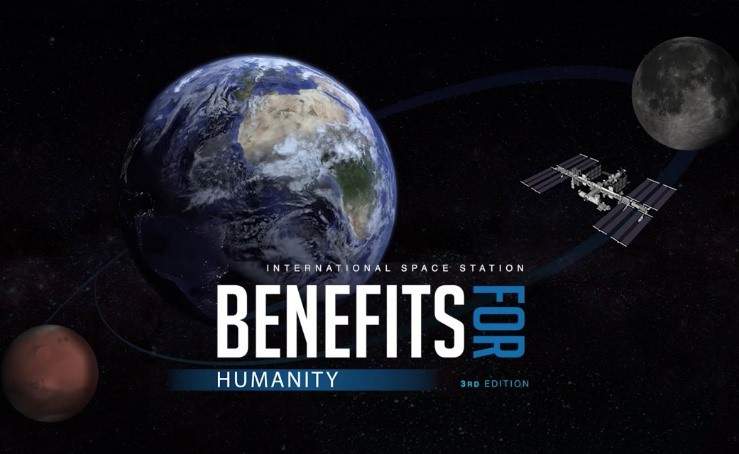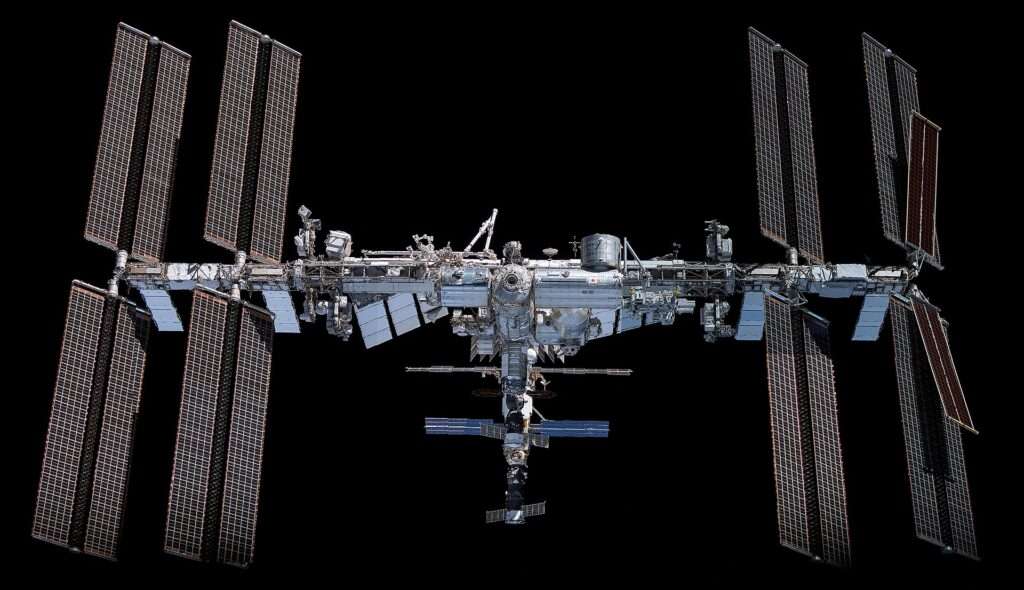The largest modular space station in low Earth orbit at the moment is the International Space Station (ISS). Five space agencies are involved in this international project: NASA (the United States), Roscosmos (Russia), JAXA (Japan), ESA (Europe), and CSA (Canada). Astrobiology, astronomy, meteorology, physics, and other scientific disciplines are studied at the station’s microgravity and space environment research facility. The ISS is ideal for testing the hardware and systems needed for potential long-duration journeys to the Moon and Mars in the future. It is often visible to the unaided eye from the surface of the Earth and is the largest artificial object in the solar system and the largest satellite in low Earth orbit.
The station is split into two parts: the Russian Orbital Segment (ROS), which is controlled by Russia, and the United States Orbital Segment (USOS), which is operated jointly by the United States and other states. There are six modules in the Russian section. Ten modules make up the US section, and 76.6% of their support services are provided by NASA, 12.8% by JAXA, 8.3% by ESA, and 2.3% by CSA.
The first ISS component was launched in 1998, and the first permanent occupants, who were launched from the Baikonur Cosmodrome on October 31, 2000, arrived on November 2, 2000. Since then, the station has been continuously occupied for 22 years and 14 days, breaking the previous record of 9 years and 357 days held by the Mir space station and becoming the longest continuous human presence in low Earth orbit.
STRUCTURE
The International Space Station (ISS) consists of 16 pressurised modules: six Russian (Zarya, Zvezda, Poisk, Rassvet, and Nauka), eight US (BEAM, Leonardo, Harmony, Quest, Tranquility, Unity, and Destiny), one Japanese (Kib), and one European module (Columbus).
NASA intended to launch Freedom, a modular space station, as a counterbalance to the Soviet Salyut and Mir space stations, towards the beginning of the 1980s. Space Station Freedom invited the ESA to participate in 1984, and by 1987 the ESA had approved the Columbus laboratory. The International Space Station was eventually revealed by Russian Prime Minister Viktor Chernomyrdin and American Vice President Al Gore in September 1993. At Moscow’s Khrunichev State Research and Production Space Center, the Russian modules, notably Zarya and Zvezda, were created. Zvezda was first produced in 1985 as a part for Mir-2, but it was never launched and ended up becoming the ISS Service Module. The EADS Astrium Space Transportation factories in Bremen, Germany, together with numerous other contractors throughout Europe, produced the European Space Agency’s (ESA) Columbus module. The Japanese Experiment Module (JEM), often known as Kib, is a science module made by Japan for the International Space Station (ISS). It is connected to the Harmony module and is the largest individual ISS module. On STS-123 and STS-124, the Space Shuttle launched the module’s first two components into space. On STS-127, the third and last components were launched.

Benefits of the International Space Station for Earthbound Humanity
- Developing the newest medical scanning technology.
- The development of new medications for diseases like Duchenne muscular dystrophy.
- Creating the elements for animal artificial blood production.
- Applications of robotic arms in an automotive factory.
- Space research among students.
- Lowering city temperatures and monitoring water.
- Ultrasound techniques used on Earth.
- Apply station air filtering technology to preserving food in supermarkets and combating COVID.
- Colloids and common household items.
- Designing prosthetic retinas for space travel.
- Making cancer therapies easier for patients
- Encouraging the next generation by conversing with station
- Monitoring Earth’s temperature safety
- Microbes in the solar system are being sequenced for their DNA.
- Improving knowledge of the underlying sciences that govern our world.
- keeping an eye on natural calamities from space
Sight of iss (international space station)
Between Wednesday, November 16, 2022, and Thursday, December 1, 2022, the ISS may be seen during the following times.
Location : Patna
| Date | Visible | Max Height* | Appears | Disappears |
|---|---|---|---|---|
| Wed Nov 16, 6:30 PM | 4 min | 21° | 10° above W | 18° above NNW |
| Thu Nov 17, 5:41 PM | 6 min | 41° | 10° above WSW | 10° above NNE |
| Sat Nov 19, 5:43 PM | 3 min | 13° | 10° above W | 10° above N |




